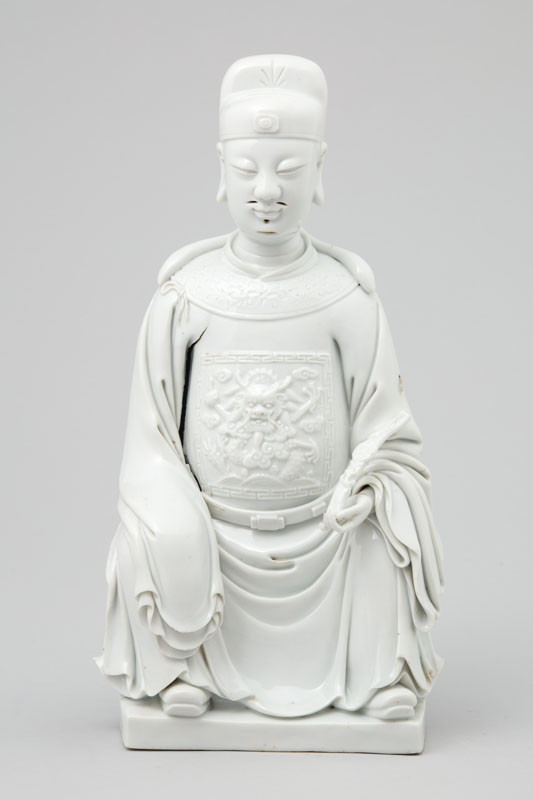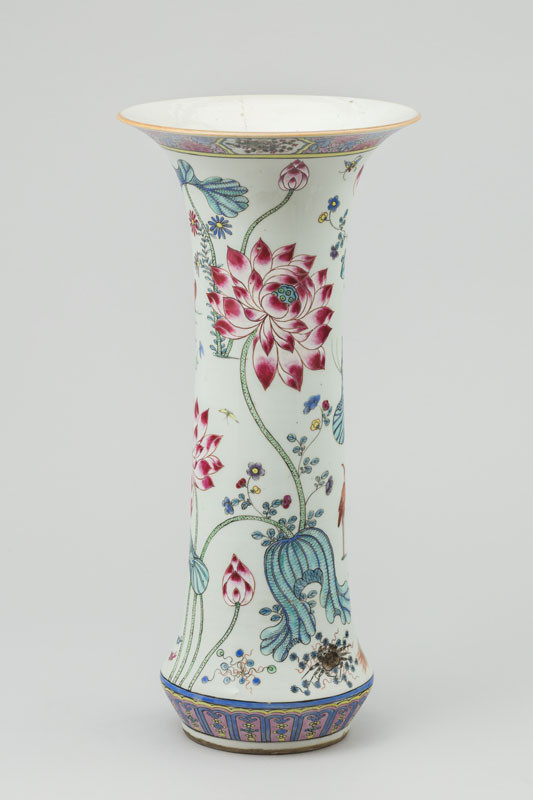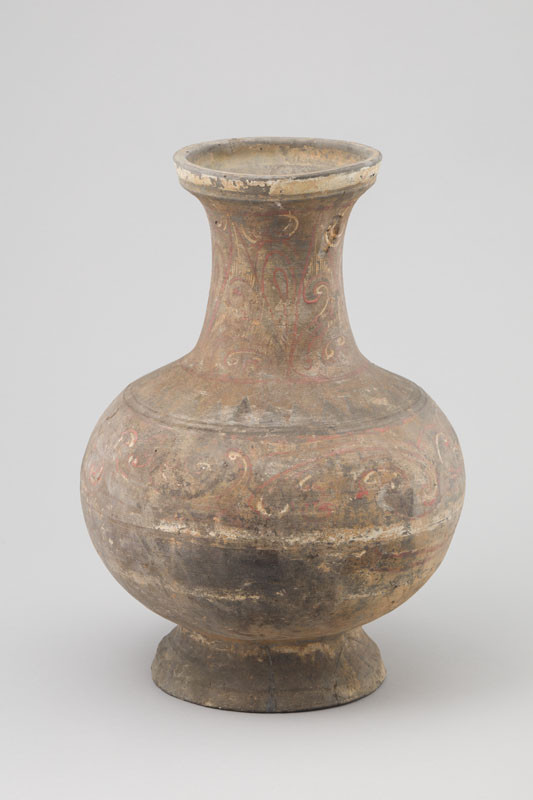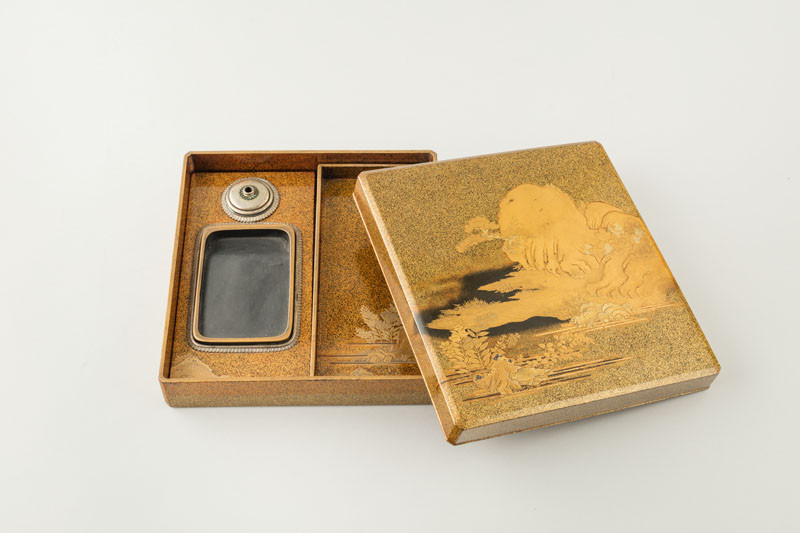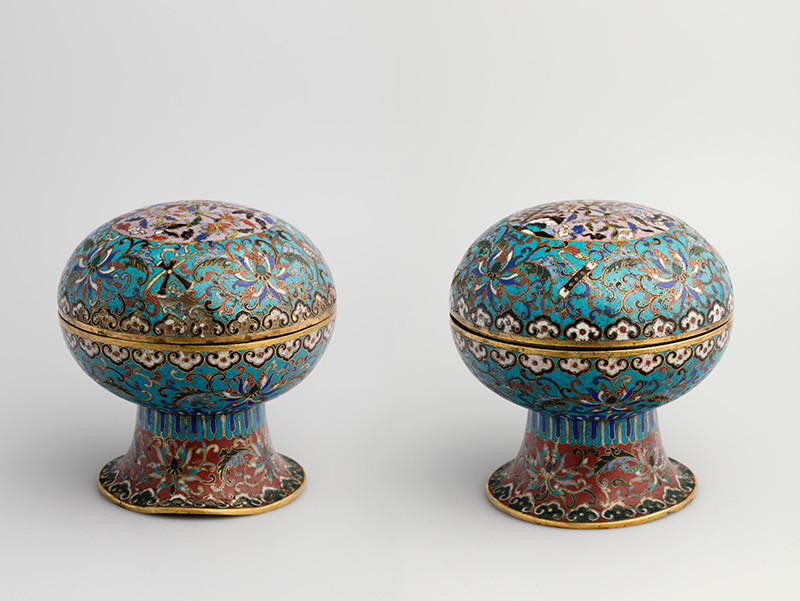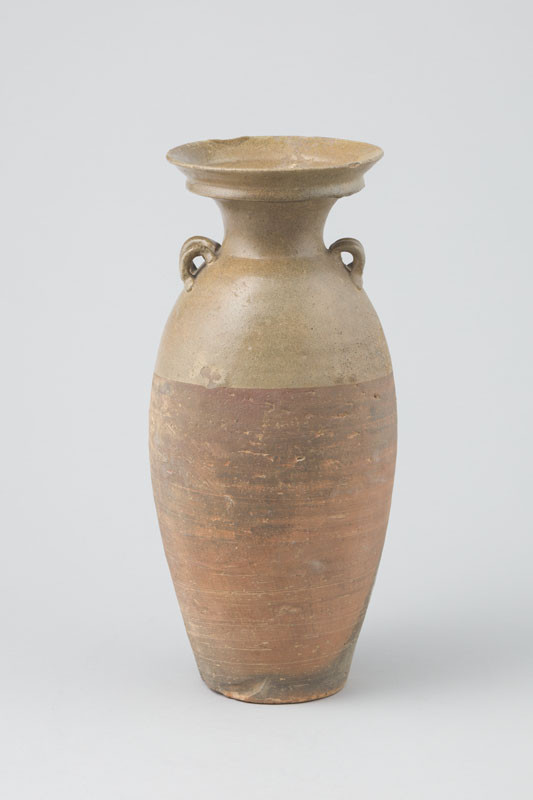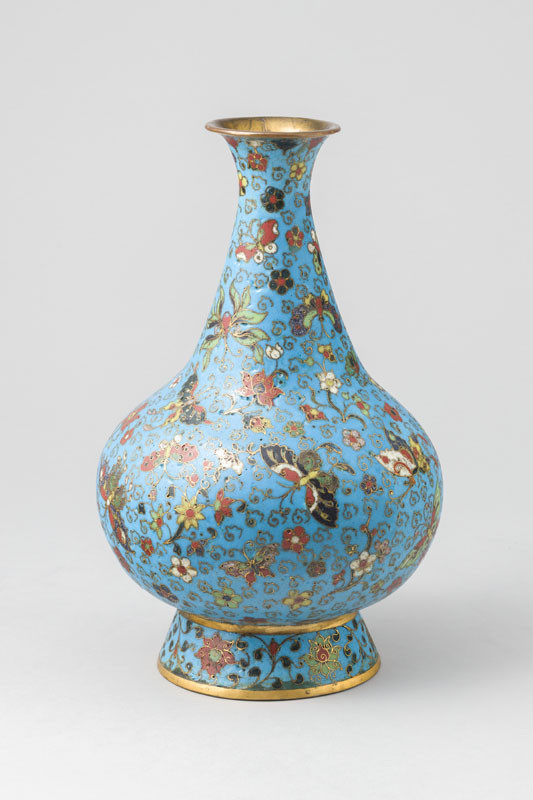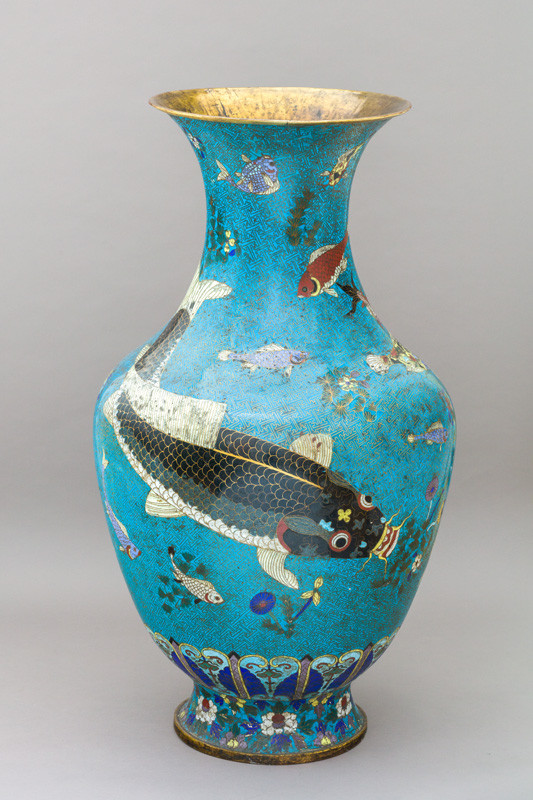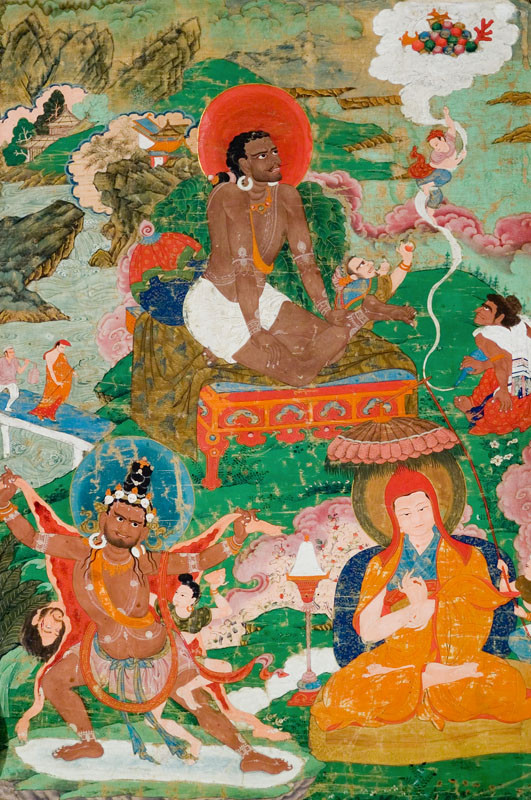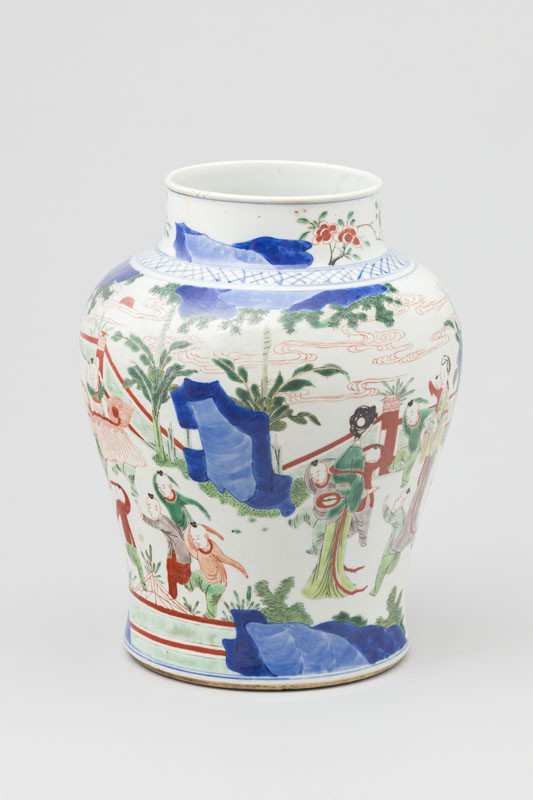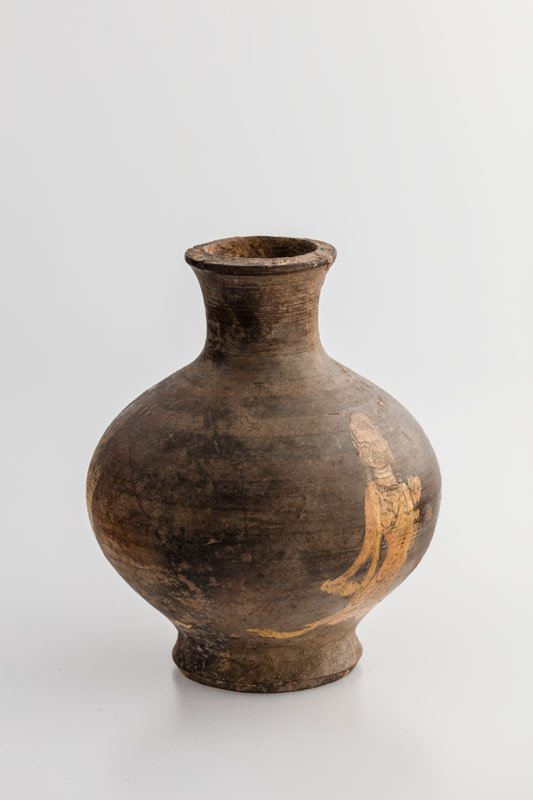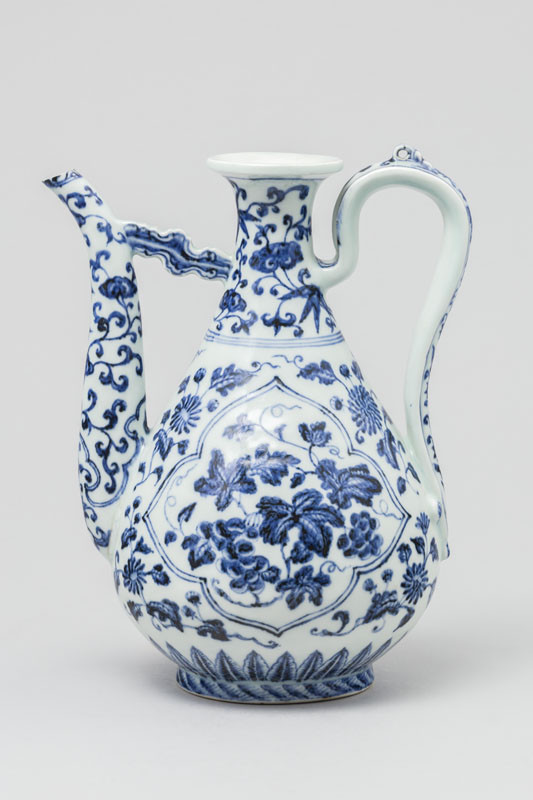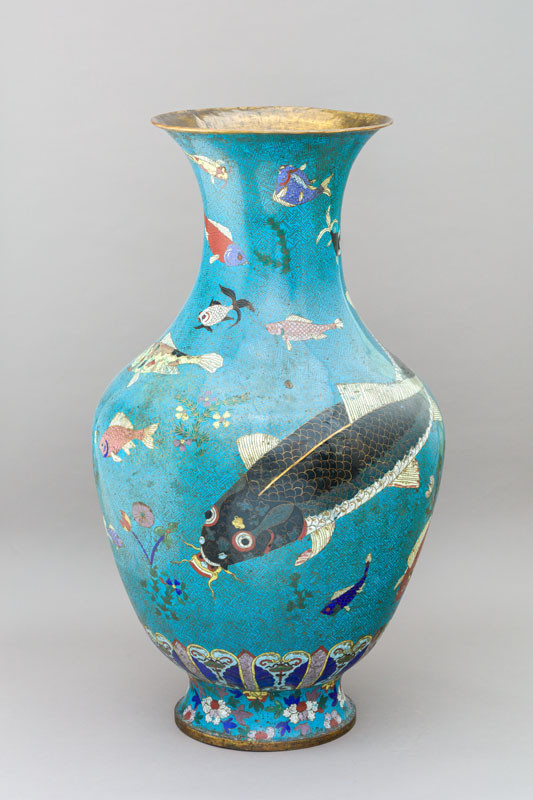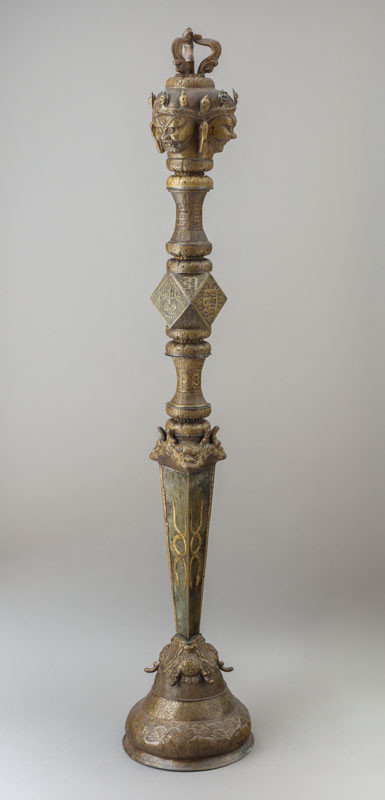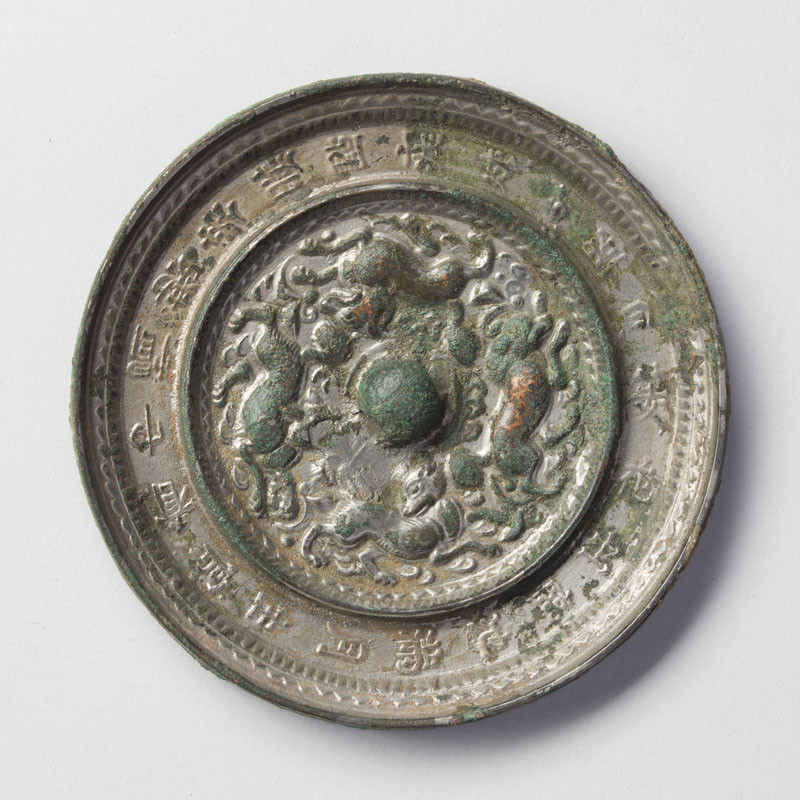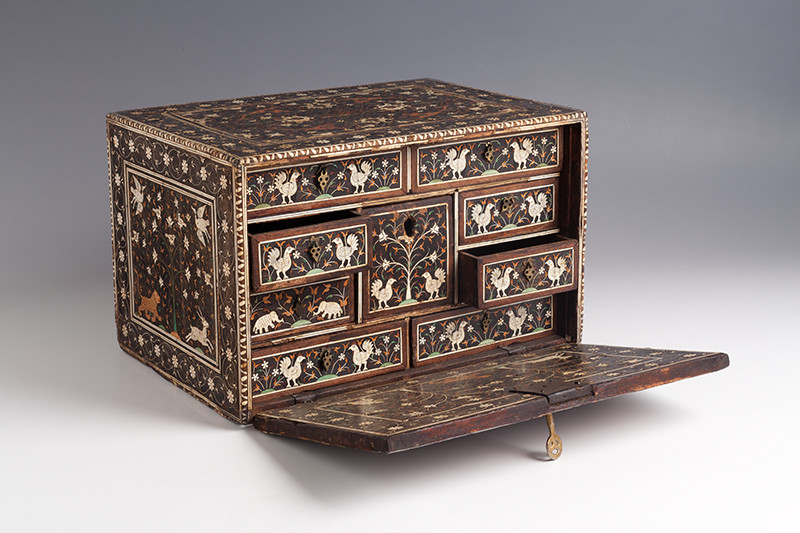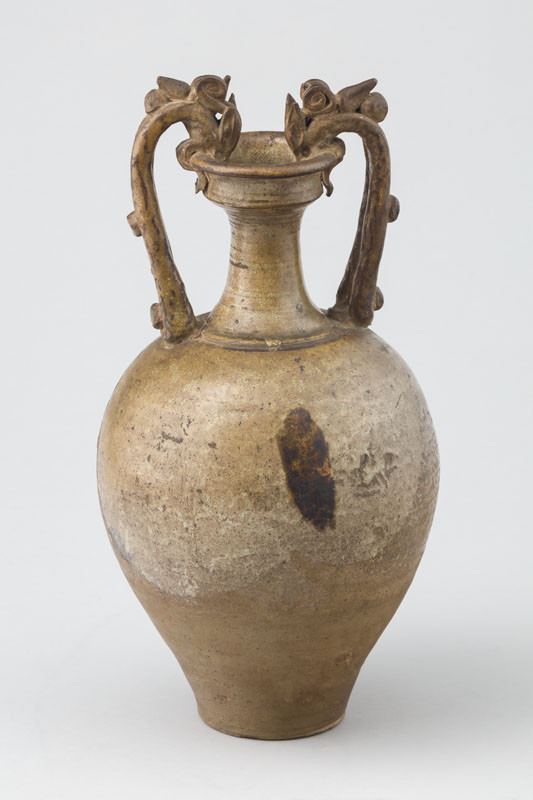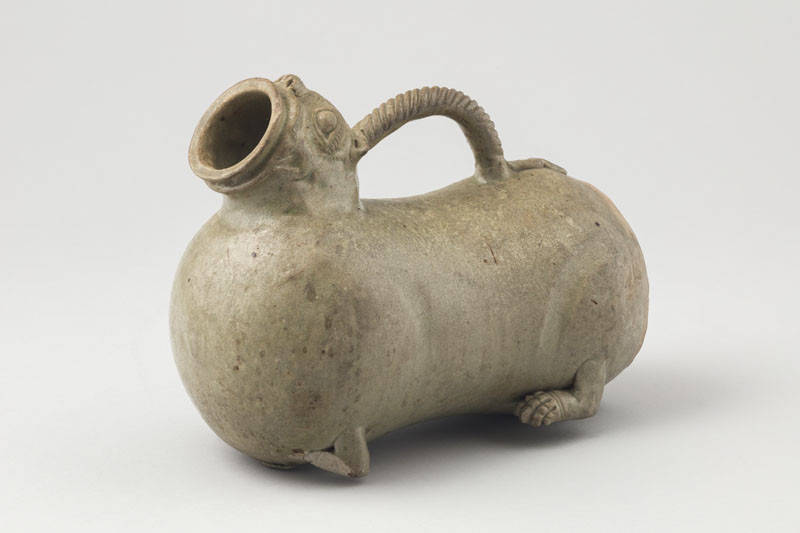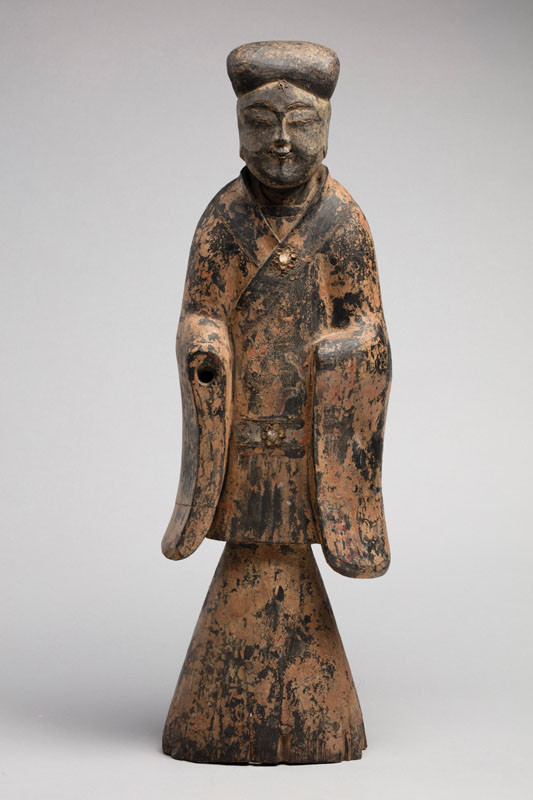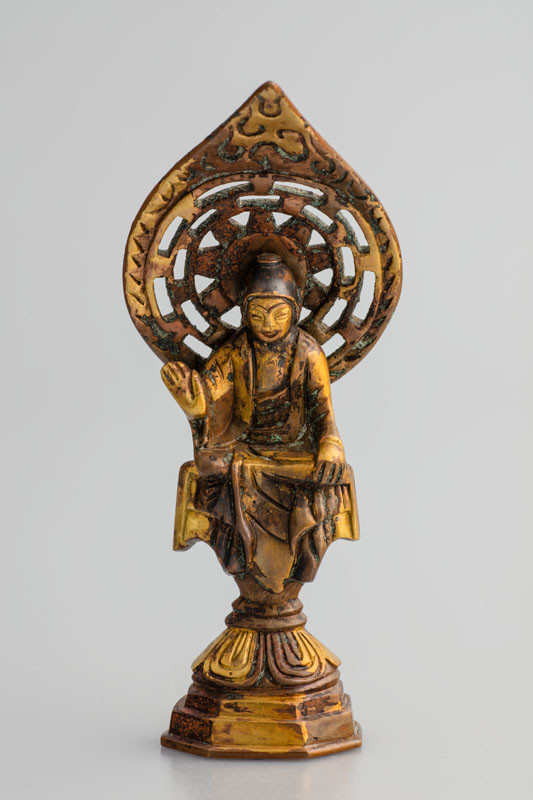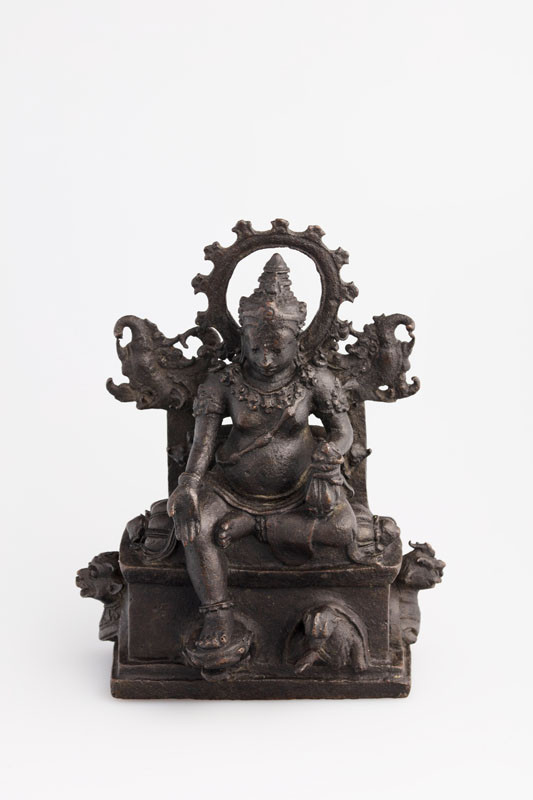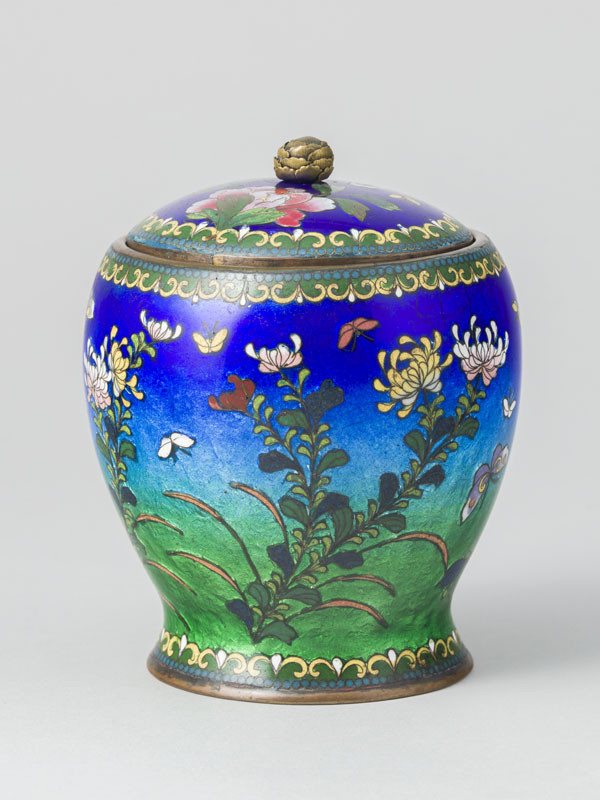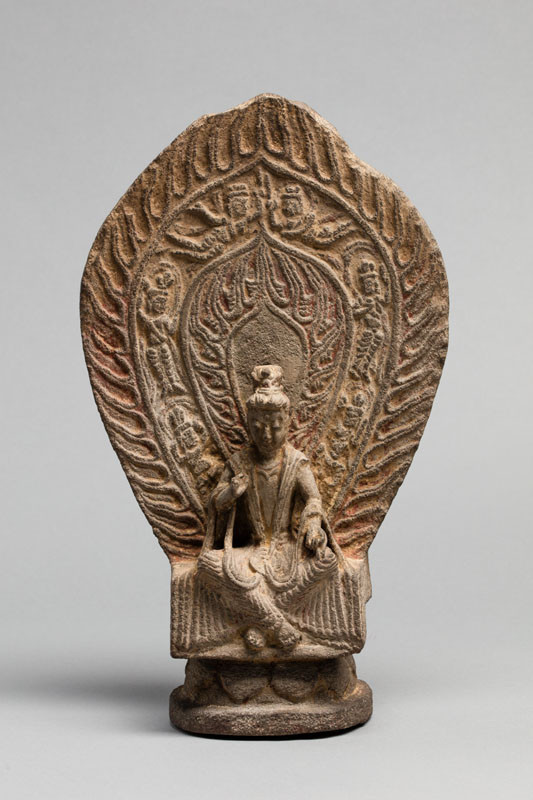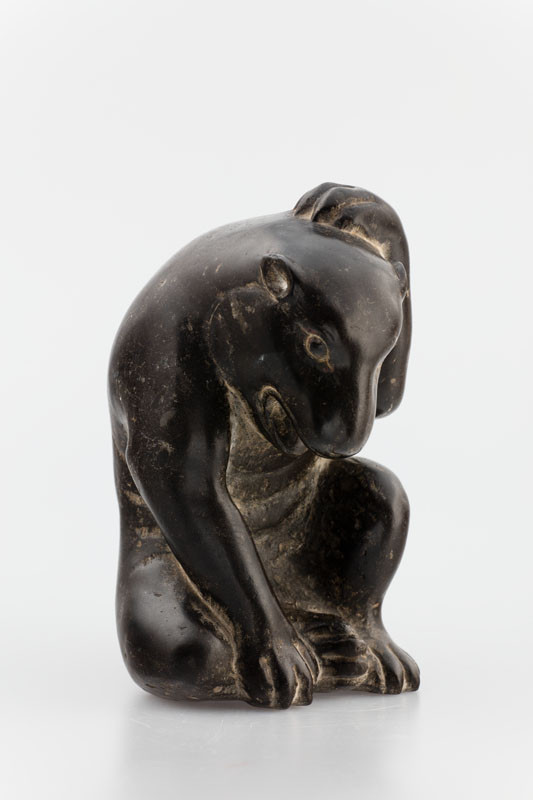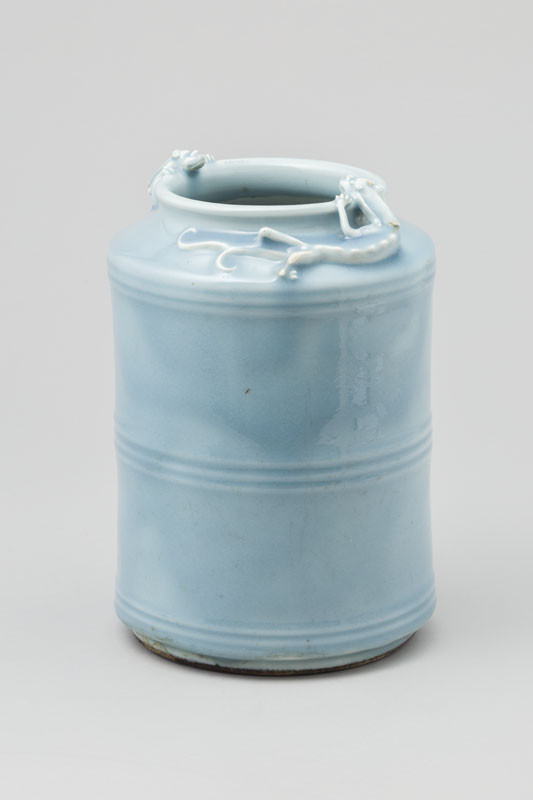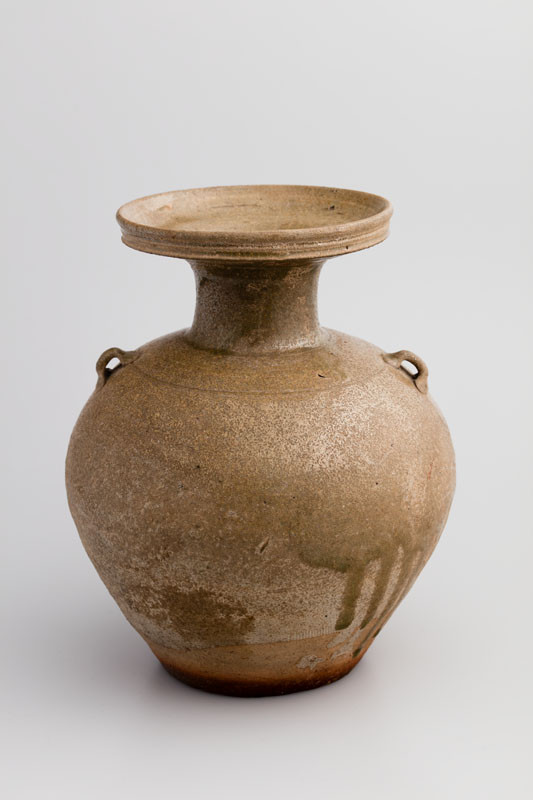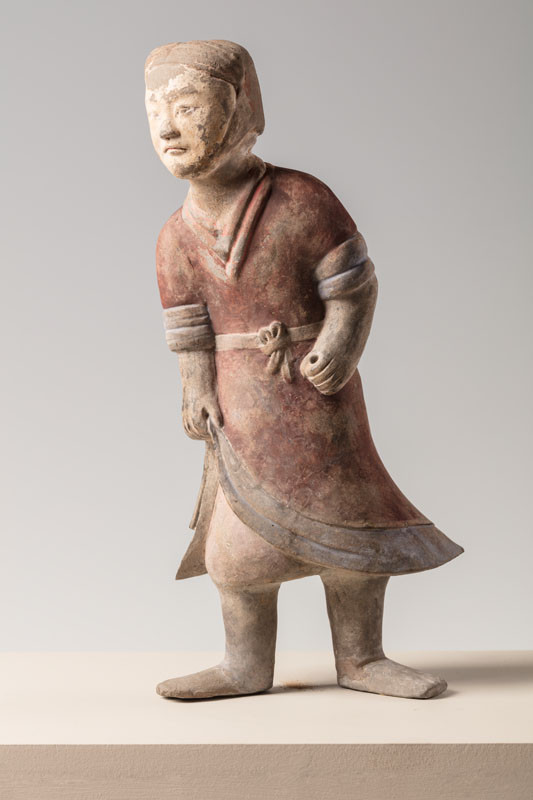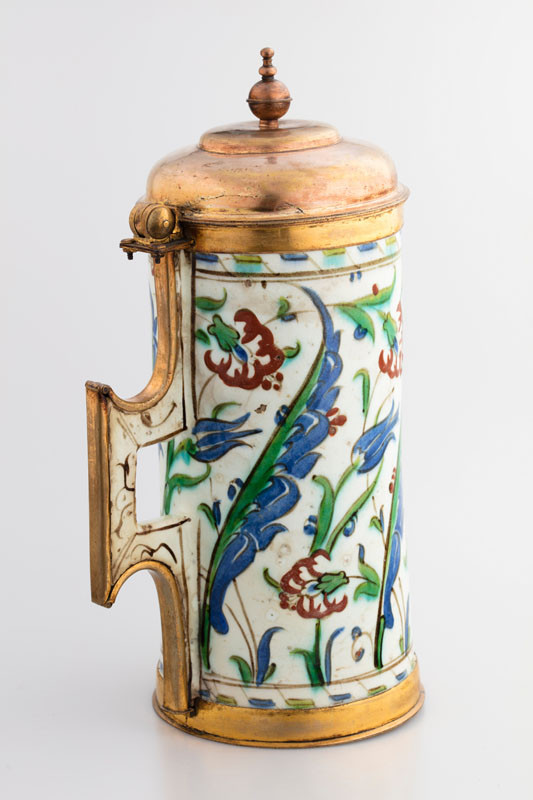
A cylinder-shaped ceramic ware with a bent handle and brass fittings. The body is decorated in underglaze tulips, hyacinths and stylized foliage in blue, red bole and green shades on a white background. This ewer’s technique, style and colours are in line with ceramic production of the Ottoman city of Iznik, which peaked in the 16th century. Producers innovated the material composition to achieve a whitish body, probably in an initial effort to emulate Chinese porcelains. They added 80 percent ground quartz and clay additives as well as fritted glass with a high lead content, enabling a lower firing temperature. They produced wares of both traditional and adopted shapes; the line-marked joint on the handle (like the handle of a wooden vessel) emulates the shape of European tankards. Starting in the 16th century, Iznik ceramics adorned the banquet tables of wealthy Europeans as exclusive rarities. At that time, European fittings began to be mounted on ewers and pitchers.

